Proteolipid Protein-Induced Mouse Model of Multiple Sclerosis Requires B Cell-Mediated Antigen Presentation
- PMID: 37548478
- PMCID: PMC10528642
- DOI: 10.4049/jimmunol.2200721
Proteolipid Protein-Induced Mouse Model of Multiple Sclerosis Requires B Cell-Mediated Antigen Presentation
Abstract
The pathogenic role B cells play in multiple sclerosis is underscored by the success of B cell depletion therapies. Yet, it remains unclear how B cells contribute to disease, although it is increasingly accepted that mechanisms beyond Ab production are involved. Better understanding of pathogenic interactions between B cells and autoreactive CD4 T cells will be critical for novel therapeutics. To focus the investigation on B cell:CD4 T cell interactions in vivo and in vitro, we previously developed a B cell-dependent, Ab-independent experimental autoimmune encephalomyelitis (EAE) mouse model driven by a peptide encompassing the extracellular domains of myelin proteolipid protein (PLPECD). In this study, we demonstrate that B cell depletion significantly inhibited PLPECD-induced EAE disease, blunted PLPECD-elicited delayed-type hypersensitivity reactions in vivo, and reduced CD4 T cell activation, proliferation, and proinflammatory cytokine production. Further, PLPECD-reactive CD4 T cells sourced from B cell-depleted donor mice failed to transfer EAE to naive recipients. Importantly, we identified B cell-mediated Ag presentation as the critical mechanism explaining B cell dependence in PLPECD-induced EAE, where bone marrow chimeric mice harboring a B cell-restricted MHC class II deficiency failed to develop EAE. B cells were ultimately observed to restimulate significantly higher Ag-specific proliferation from PLP178-191-reactive CD4 T cells compared with dendritic cells when provided PLPECD peptide in head-to-head cultures. We therefore conclude that PLPECD-induced EAE features a required pathogenic B cell-mediated Ag presentation function, providing for investigable B cell:CD4 T cell interactions in the context of autoimmune demyelinating disease.
Copyright © 2023 by The American Association of Immunologists, Inc.
Figures
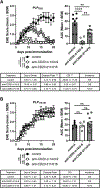
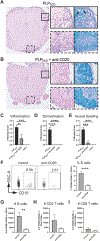



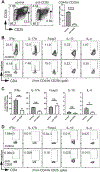
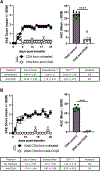

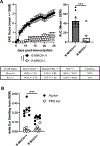
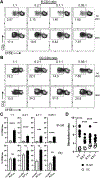
Similar articles
-
Novel B cell-dependent multiple sclerosis model using extracellular domains of myelin proteolipid protein.Sci Rep. 2020 Mar 19;10(1):5011. doi: 10.1038/s41598-020-61928-w. Sci Rep. 2020. PMID: 32193439 Free PMC article.
-
B cell antigen presentation is sufficient to drive neuroinflammation in an animal model of multiple sclerosis.J Immunol. 2015 Jun 1;194(11):5077-84. doi: 10.4049/jimmunol.1402236. Epub 2015 Apr 20. J Immunol. 2015. PMID: 25895531 Free PMC article.
-
T cell-depleted splenocytes from mice pre-immunized with neuroantigen in incomplete Freund's adjuvant involved in protection from experimental autoimmune encephalomyelitis.Immunol Lett. 2014 Jan-Feb;157(1-2):38-44. doi: 10.1016/j.imlet.2013.11.001. Epub 2013 Nov 9. Immunol Lett. 2014. PMID: 24220208
-
Evidence that Fas and FasL contribute to the pathogenesis of experimental autoimmune encephalomyelitis.Arch Immunol Ther Exp (Warsz). 2000;48(5):381-8. Arch Immunol Ther Exp (Warsz). 2000. PMID: 11140465 Review.
-
Experimental Autoimmune Encephalomyelitis (EAE) as Animal Models of Multiple Sclerosis (MS).Cold Spring Harb Perspect Med. 2018 Nov 1;8(11):a028977. doi: 10.1101/cshperspect.a028977. Cold Spring Harb Perspect Med. 2018. PMID: 29311122 Free PMC article. Review.
Cited by
-
Intruders or protectors - the multifaceted role of B cells in CNS disorders.Front Cell Neurosci. 2024 Jan 10;17:1329823. doi: 10.3389/fncel.2023.1329823. eCollection 2023. Front Cell Neurosci. 2024. PMID: 38269112 Free PMC article. Review.
-
Multiple Sclerosis: A Story of the Interaction Between Gut Microbiome and Components of the Immune System.Mol Neurobiol. 2025 Jun;62(6):7762-7775. doi: 10.1007/s12035-025-04728-5. Epub 2025 Feb 11. Mol Neurobiol. 2025. PMID: 39934561 Free PMC article. Review.
-
B Cells Influence Encephalitogenic T Cell Frequency to Myelin Oligodendrocyte Glycoprotein (MOG)38-49 during Full-length MOG Protein-Induced Demyelinating Disease.Immunohorizons. 2024 Sep 1;8(9):729-739. doi: 10.4049/immunohorizons.2400069. Immunohorizons. 2024. PMID: 39330967 Free PMC article.
-
Mimicking the brain: Epstein-Barr virus and foreign agents as drivers of neuroimmune attack in multiple sclerosis.Front Immunol. 2023 Nov 3;14:1304281. doi: 10.3389/fimmu.2023.1304281. eCollection 2023. Front Immunol. 2023. PMID: 38022632 Free PMC article. Review.
References
-
- Culpepper WJ, Marrie RA, Langer-Gould A, Wallin MT, Campbell JD, Nelson LM, Kaye WE, Wagner L, Tremlett H, Chen LH, et al. (2019). Validation of an algorithm for identifying MS cases in administrative health claims datasets. Neurology 92, e1016–e1028. 10.1212/WNL.0000000000007043. - DOI - PMC - PubMed
-
- Wallin MT, Culpepper WJ, Campbell JD, Nelson LM, Langer-Gould A, Marrie RA, Cutter GR, Kaye WE, Wagner L, Tremlett H, et al. (2019). The prevalence of MS in the United States: A population-based estimate using health claims data. Neurology 92, e1029–e1040. 10.1212/WNL.0000000000007035. - DOI - PMC - PubMed
Publication types
MeSH terms
Substances
Grants and funding
LinkOut - more resources
Full Text Sources
Medical
Molecular Biology Databases
Research Materials

